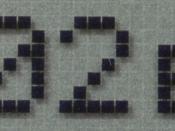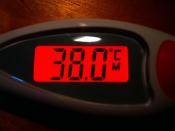Making measurements and interpreting their results are the most fundamental activities in experimental science. The International System of Units, universally abbreviated SI (from the French Le Systeme International d'Unites), is the modern metric system used in all scientific measurement.
The SI was established in 1960 by the 11th General Conference on Weights and Measures (CGPM). The CGPM is an intergovernmental organization created by a diplomatic treaty called the Meter Convention (Convention du Metre, often called the "Treaty of the Meter" in the United States). The Meter Convention, signed in Paris in 1875 by representatives of seventeen nations (including the United States) remains the basis of all international agreement on units of measurement.
The Meter Convention also created the International Bureau of Weights and Measures (BIPM, Bureau International des Poids et Mesures) and the International Committee for Weights and Measures (CIPM, Committee International des Poids et Mesures). The BIPM, which is located in Sevres, a suburb of Paris, France, and which has the task of ensuring worldwide unification of physical measurements, operates under the exclusive supervision of the CIPM, which itself comes under the authority of the CGPM.
Scientific Notation
In science, it is common to work with very large and very small numbers. For example, the diameter of a red blood cell is 0.0065 cm, the distance from the earth to the sun is 150,000,000 km, and the number of molecules in 1 g of water is 33,400,000,000,000,000,000,000. It gets cumbersome to work with such long numbers, so measurements such as these are often written using shorthand called scientific notation.
Each zero in the numbers above represents a multiple of 10. For example, the number 100 represents 2 multiples of 10 (10 x 10 = 100). In scientific notation, 100 can be written as 1 times 2...



Good lab
Needs sources.
Concise. BUT Plagiarism is obviously present. Aren't you gonna credit people???? hmmm??
yes its ok... what about mathematical uncertainties???
0 out of 0 people found this comment useful.